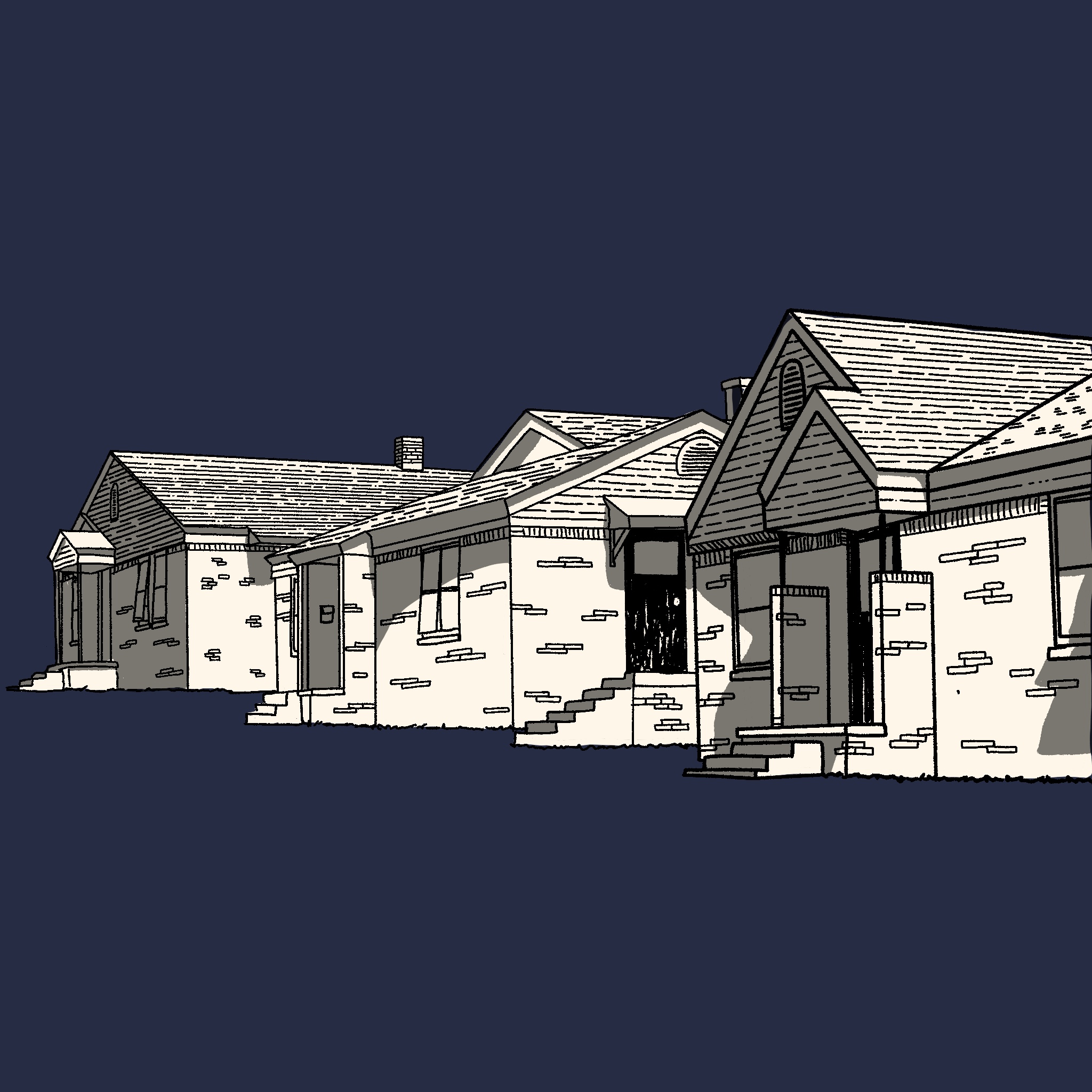Older people are the fastest-growing group experiencing homelessness, with some forecasts expecting this population to triple from 2017 levels by 2030.
But most communities have few shelter and housing programs tailored to older adults, who tend to have more complex needs and less ease navigating shelter and health care systems than younger people.
Research from the Journal of General Internal Medicine found that people experiencing homelessness in their 50s and 60s have the health of someone in their 70s or 80s. A 2005 study found most older people experiencing homelessness have two or more chronic health conditions.

Melinda Forstey is chief operating officer of Serving Seniors in San Diego, California, a nonprofit that provides housing programs and other services to older adults in poverty. She told Streetlight there’s a saying for this kind of health decline: 50 is the new 70.
“Their medical needs are coming on more quickly, and they’re not being met,” she said. “For the vast majority of shelters, at least in San Diego, there are no additional supports to address those needs.”
Forstey said that if someone can’t complete their activities of daily living on their own—tasks like eating, dressing and using the bathroom—local shelters turn them away because they don’t have the staff to meet those needs.
“What we’re seeing is some of the most vulnerable older adults with the greatest medical needs essentially have nowhere to go,” she said.
HUD tracks the number of shelter beds in the United States, but not those just for older adults
Some homeless service providers are seeing more need from people who are 55 or older, an age group the US Department of Housing and Urban Development’s (HUD) annual homeless census only started counting last year.
In 2023, the point-in-time count estimated more than a fifth of people experiencing homelessness in the United States were 55 or older. About a quarter of unsheltered people were adults 55 or older.
HUD’s annual shelter count doesn’t track shelter beds for older adults, but in general, communities don’t have enough shelter beds as it is.
Some communities are responding to a growing need for age-appropriate resources by building emergency shelters, affordable housing complexes and other types of housing for older adults.
[ Read more: In Knoxville, a new apartment owner wants to double the rent. Some renters worry they’ll become homeless. ]
In a minority of cities, nonprofits like Hearth in Boston, Massachusetts and Serving Seniors specialize in providing older adults with housing and homeless services.
Aside from their physical health, older adults also have greater mental health needs, which sometimes stem from experiencing homelessness.
“They have a lot of trauma related to their life, and also being homeless is its own trauma,” said Nimo Hashi, director of supportive housing for Hearth. “When we see younger individuals in shelters, to them it’s a temporary stepping stone, but the older individuals have difficulty navigating the system.”
Hashi thinks the Boston area would benefit from having more case managers dedicated to helping older adults with that.
“Having case managers, like a care coordinator in the shelters, hospitals or wherever they are, would be a major resource for them,” she said. “They need a secondary person to help them understand how to navigate the system.”
The lack of a safety net and rising housing costs are leading to more elder homelessness
A Serving Seniors needs assessment survey from 2021 found the main cause of older adults’ homelessness was financial instability caused by things like the loss of a spouse, a job or their savings after a medical emergency.
“Often, it was simply just increased rent on a fixed income, and more and more, that is the No. 1 reason we are seeing older adults becoming homeless,” Forstey said.
The survey found some older adults experiencing homelessness don’t want to stay in shelters due to previous bad experiences. More than a fifth of those surveyed said they had been physically assaulted while staying at shelters.
[ Read more: A Knoxville landlord pressured a local news station to remove an article about a steep rent hike, email shows ]
Some older people avoid shelters because they aren’t fully accessible.
“Many shelters are large spaces with bunkbeds, where the bathrooms are far away and they don’t accommodate a wheelchair or a walker,” said Patti Prunhuber, director of housing advocacy for Justice in Aging. “They can be very large and cavernous, and for people with hearing or visual impairments, they’re particularly disorienting.”
At end of 2022, the city of San Diego contracted with Serving Seniors to run a non-congregate bridge shelter for older adults called Seniors Landing. Bridge shelters are a type of transitional housing focused on providing supportive services that prepare residents for permanent housing.
“While they’re at Seniors Landing, our team is really there to help them build up their life skills and learn how to live independently,” Forstey said.
Robert Burton, executive director of Faith City Mission in Amarillo, Texas, said he isn’t seeing more older adults than usual, but the nonprofit has always served a good number of seniors. The nonprofit has a program that can serve up to 15 older men experiencing homelessness, who can stay at the shelter for as long as it takes them to find an apartment, assisted living facility or other housing.
“We are really trying to be proactive in helping them so they don’t go back to where they were,” Burton said, “because it is harder for a senior. Some of these men are in their 70s. It’s harder for them to find a job, and some of them have physical limitations.”
The nonprofit often connects clients to health care, including surgeries, through the Veterans Affairs healthcare system in Amarillo and other providers.
“A lot of it is physical things—thyroid issues, heart issues, stuff as they get older and haven’t been taking care of themselves that needs attention,” Burton said. “We try to make sure these men get the prescriptions they need, see the doctors they need to see on a regular basis and give them a better quality of life.”
[ Read more: A record number of renters can’t afford housing ]
Faith City Mission also tries to connect their clients to family, who may be able to help them.
“It’s not that families don’t care. It’s just that these men end up out on the streets for so long,” Burton said, “the family loses contact and they don’t know where they are until we start contacting them, and once we do, most of them will come in and want to help and take on that role. Some of them even just pick them up and take them home with them.”
How rental subsidies could help older adults avoid homelessness
In California, San Diego County recently expanded its shallow subsidy program, which provides severely rent-burdened residents who are 55 and older with a $500 rental subsidy paid directly to their landlords.
“The primary driver of older adult homelessness is the gap between their fixed incomes and rapidly increasing rents and efforts by landlords to turn over tenancies that can bring higher income in,” Prunhuber said. “Looking at eviction protections and shallow subsides is a key way to address older adults’ homelessness at the front end.”
Last year, a University of California in San Francisco survey of people experiencing homelessness in California found most wanted but faced barriers to housing. The most significant barrier, they said, was housing costs.
Of those surveyed, 70% said a monthly shallow subsidy of $300 to $500 would have prevented their homelessness for at least two years.
“Homelessness is both devastating from a health and mental health point of view, but also it’s way more expensive to get people housed once they land on the street,” Prunhuber said. “For older adults, they often deteriorate very quickly on the street, their health conditions worsen, and by the time they are housed, they need more supports and services than if they had just been kept in their housing in the first place.”
Connect with resources mentioned in this story
- In Amarillo: Learn more about Faith City Mission and how to get involved
- In Boston: Learn more about Hearth, how to get help and how to get involved
- In San Diego: Learn more about Serving Seniors and how to get involved
Contact Streetlight editor Mollie Bryant at 405-990-0988 or bryant@streetlightnews.org. Follow her reporting by joining our newsletter.
Streetlight, previously BigIfTrue.org, is a nonprofit news site based in Oklahoma City. Our mission is to report stories that envision a more equitable world and energize our readers to improve their communities. Donate to support our work here.



